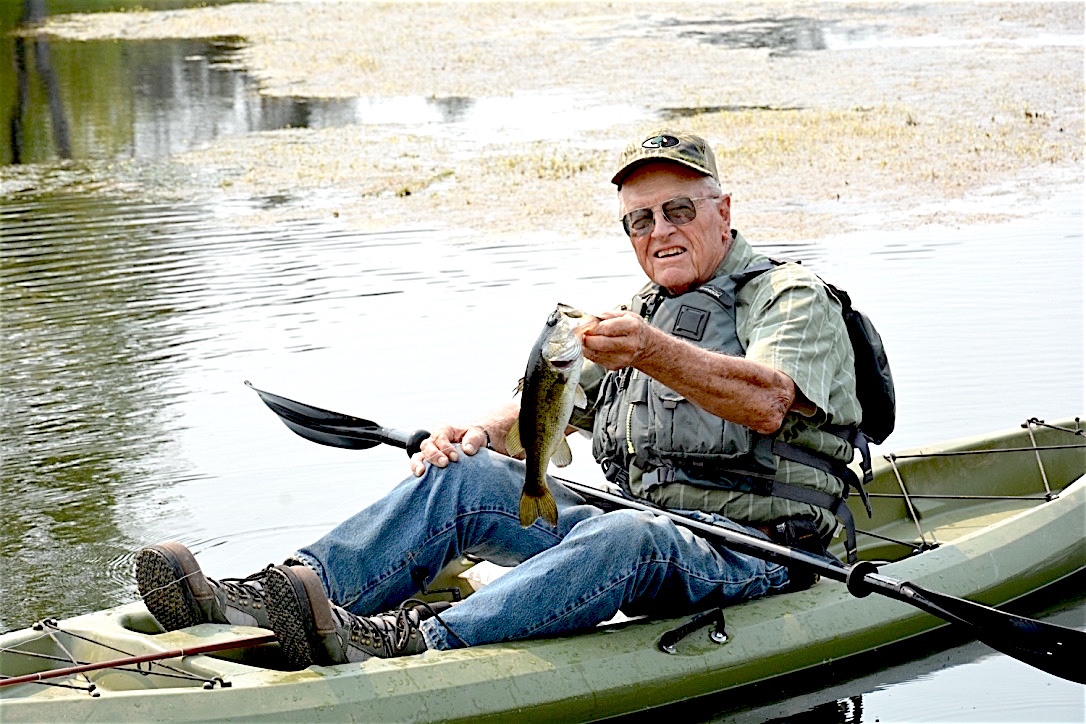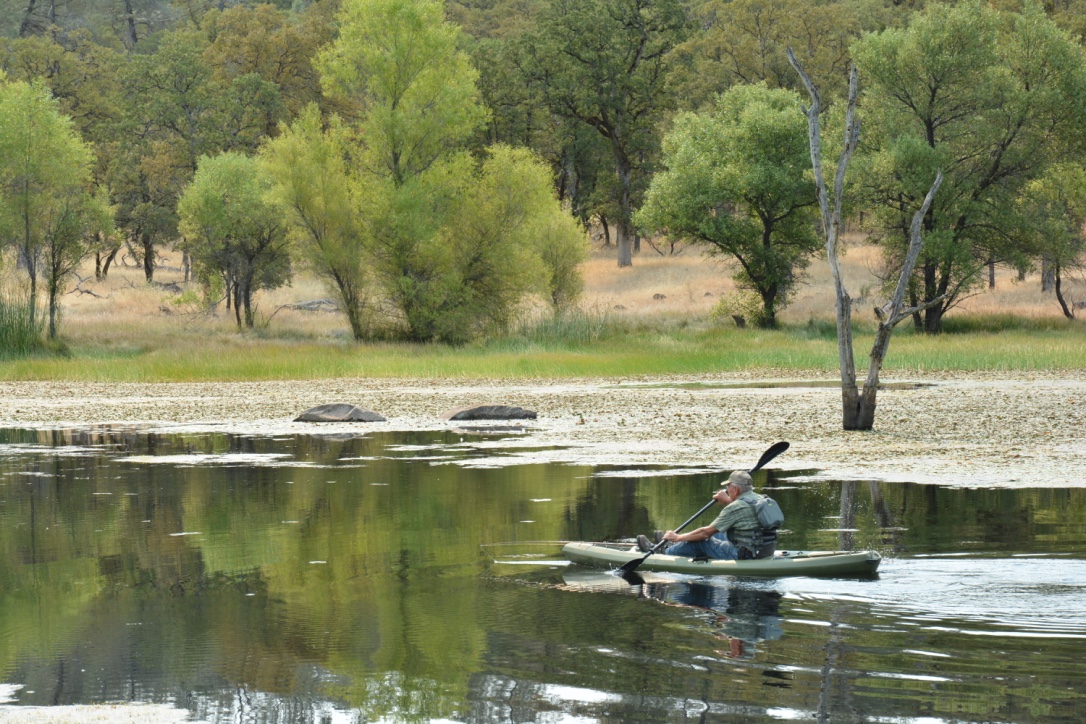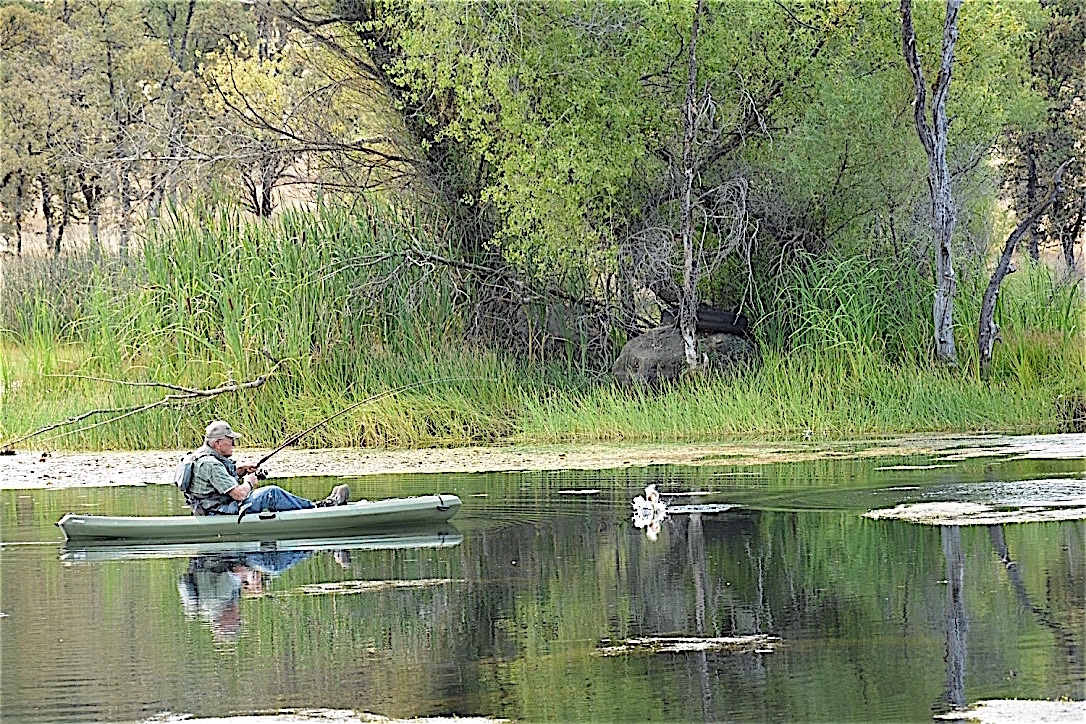Kayak Bass Fishing
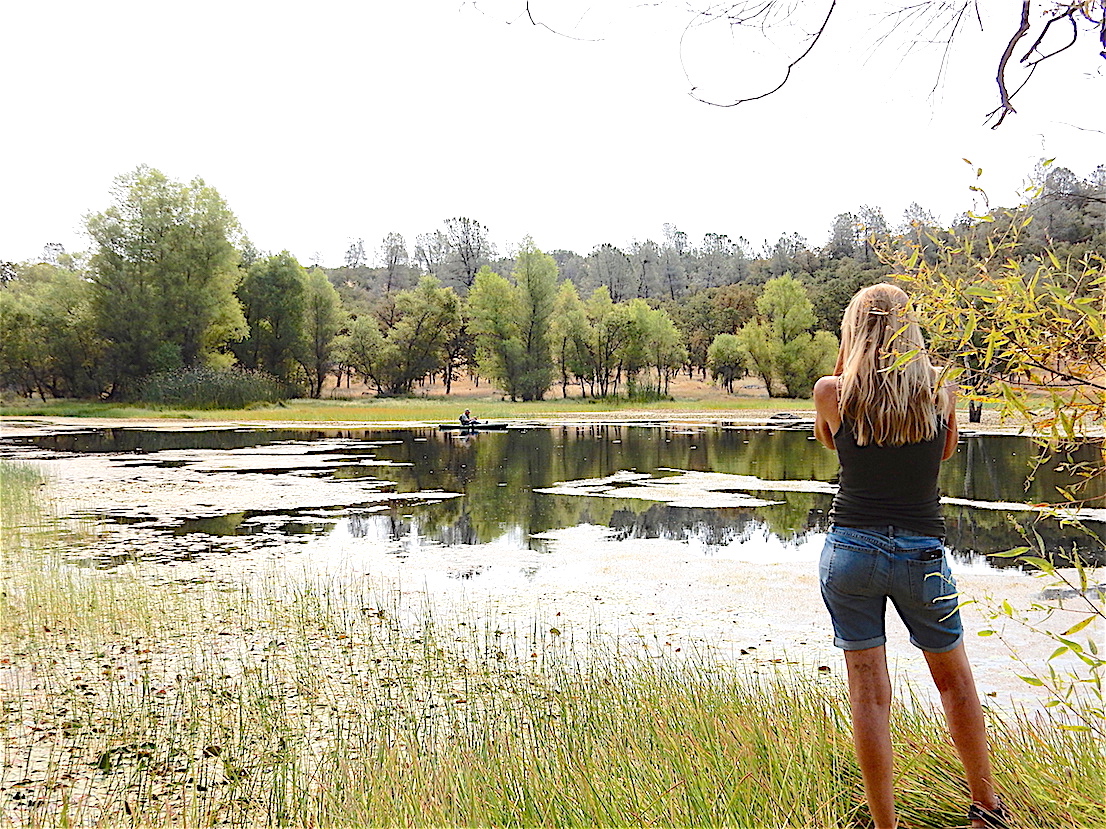
by John Higley
8-7-2017
Website
When it comes to fishing during the summer I’m pretty much stuck in a rut. Okay, three ruts. I’m either fishing for trout in a stream, trout in some back country lake, or I’m at a ranch pond in the foothills of Shasta County fishing for largemouth bass.
Normally, I fish the pond from the bank but this summer, for whatever reason, the weed growth along the edge, and to some extent out on the main body of water, became a real hindrance to fishing. Eventually it dawned on me that I needed to be out on the water if I really cared about catching more fish than weeds. Mulling the situation over, I thought about getting a small flat bottom aluminum boat, a pontoon boat like many flyfishers use or a float tube. For one reason or another none of them appealed to me. And then a friend suggested that a kayak might be the best option.
“Heck,” he said, “You don’t have to inflate it, you can put it in the bed of your truck, and you can launch it practically anywhere.”
I soon learned that kayaks are something of a fad these days. They come in different lengths, and colors, they are designed for different pastimes and they won’t break the bank. Many inexpensive models are priced below $400. Finally, after talking things over with my friend again, I decided to take a chance and invest in a low end model from Future Beach that is touted as a fishing kayak. It’s only 10.4 feet long, weighs a mere 50 pounds, and is rated for a 300-pound load. Hey, I only weigh 195 so there’s plenty of leeway.
I bought a sit-on type rather than a sit-in. The difference is the sitting arrangement. In a sit-on your legs are fully exposed and there’s more freedom of movement. It’s easier getting into the kayak, for me anyway, than it is to get out, at least without stepping into the water. It’s something about sore knees, and gravity holding me down. Actually, getting wet isn’t much of an issue around here in the summer, and I do wear wading shoes which are made to get wet. Still, the trick is to partially beach the kayak so it stays steady while I’m trying to get up and step out. So far, so good.
Despite a few drawbacks, the kayak has met my expectations, and it has given me far more access to the bass pond than I ever had before. That has resulted in me catching more fish, and landing them without gobs of weeds to weigh them down. I will admit that the first time I rode the kayak into open water I was a wee bit off balance and squirrely. I liken it to a kid riding a two-wheel bike for the first time. When your dad or mom let go of the bike in training you were on your own and wobbly, but it didn’t take long to find the groove and get comfortable.
I mentioned drawbacks a moment ago. On the kayak I have there’s limited storage space for extra tackle, and there’s nowhere to put a fish if you want to keep it other than on a stringer. For my purposes, I can put any extra tackle I think I’ll need (lures, hooks, weights and such) in my vest or a small plastic box on the floor. Bigger items can be bungee tied fore and aft, but for me, getting to them while I’m on the water would be a disaster in the making.
A note on safety is in order. Kayak paddlers should wear a personal flotation device whenever they get on the water. That said, the type of vest I bought is designed for kayak use. The lower back section of the vest is mesh rather than padding so it rides above the seat rather than against it.
Anyone interested in kayaks will find them on sale nearly everywhere sporting goods are sold. Here in Shasta County, where I live, kayaks are often on sale at Big 5 Sporting Goods, Sportsman’s Warehouse, Dick’s Sporting Goods, Costco and Tractor Supply to name a few.
I wasn’t sure at first but now, after using the kayak several times, I’m glad I bought it. I’ve gotten used to paddling around in it, and I know what to do with my fishing rod when a fish takes my lure, and how to stow the paddle until the fish is brought to hand. So there you have it. Kayak fishing—it might be for you too.
Author and writer John Higley is a resident of Palo Cedro. His articles have appeared in outdoor magazines hundreds of times and his columns appear regularly at myoutdoorbuddy.com. Higley has written four books the latest of which “Successful Turkey Hunting” was published in May, 2014 by Skyhorse Publishing in New York. This hard cover, full color book is being sold at Barnes and Noble Book Stores and on Amazon. Autographed copies are available direct from John Higley, P.O. Box 120, Palo Cedro, CA 96073. Cost is $28.95 postage paid.
Photos
More Reports
Trolling for trout on Shasta Lake
Shasta Lake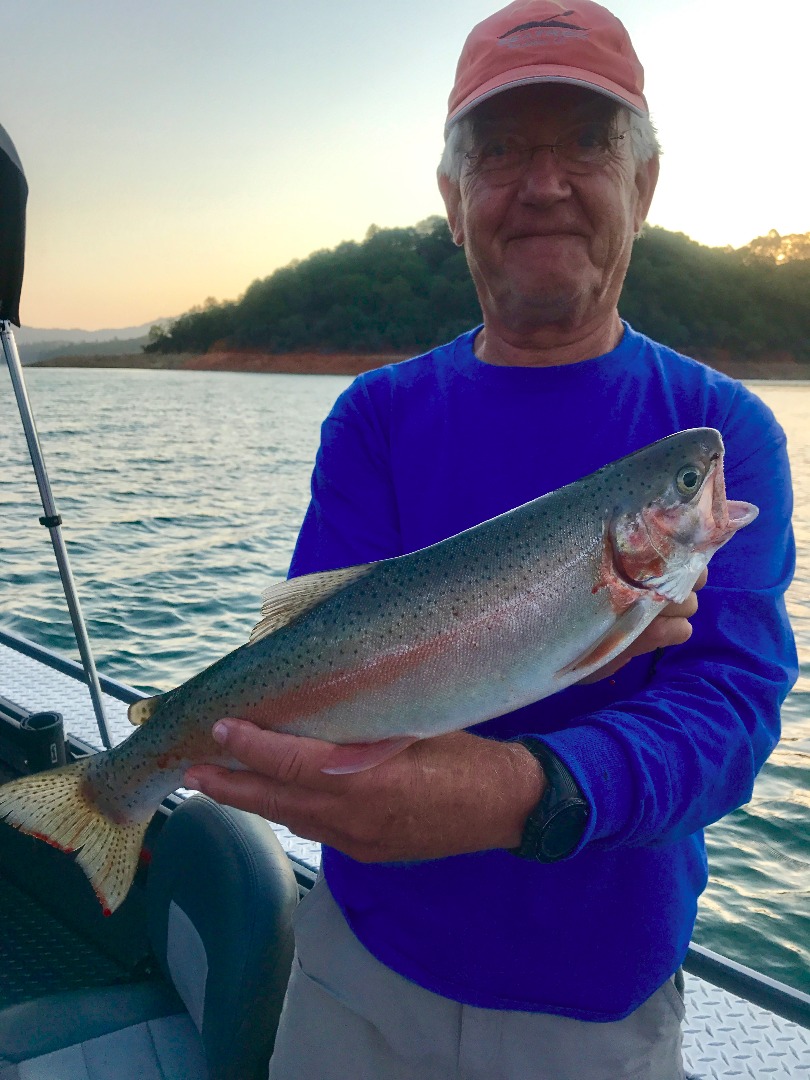
8-6-2017
It's no secret that Shasta Lake holds some of the biggest populations of rainbow trout in Northern California. Not only...... Read More
8-2-2017
There are many stories in the news today about tragedies that occur when children and pets are left in cars...... Read More


